Sales prospecting identifies and contacts potential customers to generate business.
With Bardeen you can automate prospecting to one-click workflows.
Contact sales to see a custom demo for your use case.
Sales prospecting is a crucial aspect of the sales process that involves identifying and reaching out to potential customers to generate new business opportunities. It is the foundation of building a healthy sales pipeline and achieving growth targets. In this comprehensive guide, we will dive into the key strategies, tips, and real-world examples to help you master the art of sales prospecting and drive new business growth.
We’ll also cover how to automate sales prospecting and other repetitive tasks with Bardeen, an AI agent that turns multi-step workflows into a single click, no coding required. So get ready to discover how to prospect for sales on autopilot!
Understanding sales prospecting

Sales prospecting is identifying and initiating contact with potential customers to build sales prospect lists and generate new business opportunities. It plays a critical role in building sales pipeline and achieving sales targets. Key stages in popular sales prospecting techniques include:
- Researching and pinpointing potential customers that align with your ideal customer profile.
- Qualifying leads to assess the likelihood of becoming paying customers based on budget, authority, need, and timeline.
- Reaching out to qualified leads through channels like personalized cold emailing or calling, LinkedIn, and social media to introduce your product or service and gauge interest.
Prospecting is an ongoing process that requires consistent effort to maintain a healthy sales funnel. By continuously identifying and engaging with potential customers, a sales leader, SDR, or BDR, can ensure a steady stream of opportunities to nurture and convert into closed deals.
Lead identification

Lead identification is a crucial step in popular sales prospecting strategies. It involves researching and pinpointing potential customers who fit your ideal customer profile. This means identifying those most likely interested in your product or service. The process starts by gathering key information about prospects, such as their industry, company size, and organizational role. Then, you can use data enrichment to get an even better understanding of the potential customer.
For example, a sales team at a software company may target mid-sized tech firms looking for cloud solutions. Their sales prospecting methods can begin with identifying tech firms with a certain number of employees and revenue range. They might also look for companies that have recently received funding or announced expansion plans, as these are indicators of potential readiness to invest in new solutions.
Bardeen can significantly enhance this process by helping you automate sales prospecting. With Bardeen's lead generation software, sales teams can automate data scraping from LinkedIn or other platforms to gather information about potential leads. This allows sales teams to focus on engaging with prospects rather than spending hours on manual research for B2B prospecting.
Craft your irresistible offer
Engage prospects by offering something they can't resist. An irresistible offer is key in all sales prospecting techniques, as it grabs attention and shows clear value. Consider options like pilot programs, custom ROI assessments, or bundled solutions to demonstrate your product's worth. To see all the options that can transform your sales approach, read on::
- Proof of Concept (POC) or pilot programs allows prospects to test your product in their environment, reducing risk.
- Custom ROI Assessments showcase potential financial benefits, making your product's value clear.
- Bundled Solution Packages combine multiple services at a discounted rate, providing comprehensive solutions.
- Strategic Onboarding Packages ensure smooth transitions, highlighting a commitment to customer success.
- Multi-Year Agreement Incentives offer long-term savings, encouraging loyalty.
- Success-Based Pricing Models align incentives with results, building trust.
- Lastly, Early Adoption Programs provide exclusive benefits to first adopters, appealing to innovators.
Using Bardeen, a sales leader, BDR, or SDR, can automate the process of crafting these offers. With Bardeen, you can quickly generate AI messages, documents and emails, ensuring each offer is tailored and delivered efficiently. This saves time, allowing the team to focus on closing deals and driving growth.
Lead qualification
With lead qualification tools or even manually, you can assesses a lead's potential to become a customer by evaluating key criteria such as: budget, authority, need, and timeline (BANT). This process helps identify if a lead has the interest and means to purchase. By qualifying leads, sales teams can focus on prospects with the highest conversion potential, maximizing productivity. New leads are evaluated as either qualified or disqualified based on these factors, ensuring time is spent on promising opportunities. Effective lead qualification, beyond just prospecting in sales, is crucial for successful sales outcomes.
Consider a sales team at a software company selling project management tools. They receive a list of potential leads from a recent marketing campaign. To qualify these leads:
- They first assess the budget. Can the lead afford their product?
- Next, they identify authority. Is the leader the decision-maker, or do they have influence within their organization?
- After authority, they evaluate the need. Does the lead's company face challenges that the product can solve?
- Finally, they consider the timeline. Is the lead ready to make a purchasing decision soon, or are they exploring options for the future?
By using Bardeen, the sales team can automate some of these steps. For example, they can scrape LinkedIn for data such as decision-makers within target companies, gather data about company size and industry, and use AI for scoring leads based on BANT criteria. This allows the team to focus on nurturing the most promising leads, saving time and increasing their chances of closing deals.
Initial contact
This is when sales teams reach out to potential leads to introduce their product or service. This step is about making a first impression and sparking interest. Sales reps often use channels like LinkedIn, cold calling, email, or social media to initiate contact.
A sales team for a SaaS company can identify potential leads through LinkedIn. The team then crafts personalized messages that highlight how their software can address specific challenges the lead might be facing. They tailor their emails to show an understanding of the lead’s industry and pain points, which helps establish credibility and rapport. The goal is to engage the lead and encourage them to learn more about the product.
With Bardeen, you can automate even morerepetitive tasks such as sending out personalized emails at scale. Thus, sales teams can focus more on crafting the perfect message rather than spending time on manual tasks, making initial contact more efficient and effective.
Call outreach
With call outreach you directly engage potential clients via phone calls. The process involves researching leads, crafting a compelling pitch, and making calls to introduce your product or service. Sales teams target decision-makers, present solutions for pain points, and schedule follow-up meetings.
Bardeen's playbooks can enhance this process by automating tasks like lead data enrichment and call scheduling, allowing sales reps to focus on building relationships and closing deals. Here are some worth experimenting with:
Email outreach
Email outreach is reaching potential clients through personalized emails, aiming to build relationships and convert prospects into customers. For a sales team, imagine you're targeting tech firms for your software solution. You can use Bardeen to automate your outreach by scraping LinkedIn for contacts, enriching the data, and generating personalized emails. You can even put follow-ups on autopilot based on recipient actions.
These are some of the Bardeen playbooks best used for email outreach:
LinkedIn outreach
Sales teams can use LinkedIn to connect with potential clients and build relationships. With Bardeen, you can automate this process. Imagine a sales rep needing to contact 50 potential LinkedIn leads weekly. Manually sending connection requests and personalized messages can be time-consuming. Bardeen can automate these actions, sending tailored messages to each prospect in one click. This not only saves time but ensures consistent communication.
Below, we list Bardeen playbooks tailored for LinkedIn outreach:
Video outreach
Video outreach is a powerful option that adds a personal touch to your communication. By creating tailored video messages, sales teams can engage prospects more effectively. Imagine sending a quick video to introduce your product and address specific pain points. This approach not only grabs attention but also builds trust by showing a human side to your sales effort.
With Bardeen, you can integrate video tools with your CRM, automate follow-ups, and track engagement. Below are some Bardeen playbooks recommended for video outreach:
Who is responsible for sales prospecting?
The RACI table below outlines roles for key sales prospecting tasks: defining ICP, finding prospects, software setup, initial contact, data enrichment, demos, offers, and expansion. Sales reps, account managers, BDRs, sales managers, and rev ops are assigned for each activity. Responsible (R) handles tasks, Accountable (A) oversees, Consulted (C) provides input, Informed (I) stays updated.
Effective strategies for sales prospecting

Data-driven approaches are essential for maximizing sales prospecting efforts. Using past campaign data and sales intelligence tools, you can gain valuable insights to refine your strategies.
Technology plays a crucial role in implementing efficient sales prospecting strategies. CRM systems like Salesforce help manage and analyze prospect interactions, while top prospecting tools automate repetitive tasks, allowing sales reps to focus on high-value activities. LinkedIn outreach automation and creating Salesforce contacts are examples of how Bardeen can help.
Key strategies for data-driven prospecting in sales include:
Identifying potential leads
Identifying potential leads involves analyzing data to find individuals or companies likely interested in your product. Start by defining your target audience and collecting data from various sources, such as social media, CRM systems, and market research. Use this data to spot patterns and identify prospects that match your buyer persona. Bardeen can automate this data gathering and analysis, simplifying the lead identification process.
Personalizing outreach
Personalizing outreach involves tailoring messages to each prospect using their data. This process includes researching the prospect's interests, company, and recent activities to craft a resonant message. Personalization increases engagement and response rates, making it a crucial part of effective sales prospecting. Bardeen enhances this process by automating data collection and email personalization, ensuring every outreach is relevant and impactful.
Deliver targeted content
In sales prospecting, delivering targeted content means tailoring messages to address specific needs and interests of potential leads. Start by segmenting your audience based on demographics, behavior, or industry. Then, craft personalized content that speaks directly to their pain points. This approach builds trust and engages prospects effectively. With Bardeen, automate the distribution of this customized content, ensuring timely and consistent communication with your leads.
Measure & analyze
In sales prospecting, tracking KPIs like lead conversion rate, average deal size, and sales cycle length is crucial. Use dashboards to visualize these metrics and identify trends. Regularly analyze the data to pinpoint strengths and weaknesses, and adjust strategies accordingly. This continuous measurement helps refine efforts for better results. With Bardeen, you can automate data collection and analysis, ensuring you focus on closing deals.
Sales prospecting questions to ask
Wondering how to prospect for sales to effectively qualify them and build meaningful relationships? By asking the right questions! Here are the most important to ask when building your prospecting plan, and how each one helps you move the deal forward:
- What challenges are you currently facing with [relevant topic or service]? Identifies pain points so you can tailor your solution to meet their needs.
- What goals are you hoping to achieve with a new solution? Understand their objectives to align your offering with their desired outcomes.
- How have you addressed these issues in the past? Provides insight into their previous experiences, helping you position your product effectively.
- What features are you seeking in a solution? Clarifies their specific requirements, allowing you to highlight relevant benefits of your product.
- Who is involved in the decision-making process? Ensures all key stakeholders are engaged, improving the chances of a successful sale.
- Can you describe your decision-making process? Offers insight into timelines and necessary steps, helping you navigate the sales cycle more effectively.
- What is your timeline for implementing a solution? Assesses urgency and expectations, guiding your engagement strategy.
- Do you have a budget allocated for this project? Qualifies the prospect financially, helping you propose realistic solutions within their budget.
- How do you measure success for this project? Understands their metrics for success, allowing you to demonstrate potential ROI.
- Are there any internal changes that might affect this project? Identifies any shifts in priorities or resources, enabling you to adjust your approach accordingly.
Real-world examples of successful sales prospecting
Innovative approaches like Account-Based Marketing (ABM) and personalized campaigns have proven highly effective in sales prospecting. Consider these brief examples:
- Company A implemented an ABM strategy, targeting high-value accounts with tailored content and messaging. By generating detailed prospect research reports, they increased conversion rates by 25%.
- Company B launched a personalized video prospecting campaign, creating targeted outreach emails from LinkedIn profiles. This resulted in a 40% increase in response rates and a 20% boost in meeting bookings.
- Company C leveraged intent data to identify prospects actively researching their solutions. By focusing on these high-intent leads and qualifying them efficiently, they achieved a 30% higher close rate.
Key lessons from these examples include:
- Personalization is crucial for capturing prospects' attention and demonstrating value.
- Leveraging data and technology can significantly enhance your prospecting plan efficiency and effectiveness.
- Continuously testing, refining, and adapting strategies based on results is essential for long-term success.
- By applying these insights and embracing a data-driven, customer-centric approach, sales teams can dramatically improve their prospecting outcomes.
Common misconceptions in sales prospecting

One prevalent myth in sales prospecting is that more calls always lead to more sales. However, a targeted, quality-focused approach is more beneficial than a quantity-focused one. By qualifying leads efficiently and nurturing them with personalized communication, you can enhance lead quality and engagement.
Another misconception is the undervaluation of lead nurturing. Consistently providing value and building relationships with prospects is crucial for long-term success. Tools like HubSpot can help streamline lead nurturing efforts.
Best practices to correct these misconceptions include:
- Focusing on lead quality over quantity
- Personalizing outreach based on prospect needs and interests
- Nurturing leads with relevant content and timely follow-ups
- Automating lead qualification and contact creation in your CRM
- Continuously analyzing performance metrics and adapting strategies accordingly
What’s the difference between B2B vs B2C prospecting?

Sales prospecting varies significantly between B2B (business-to-business) and B2C (business-to-consumer). In B2B prospecting, the focus is on building long-term relationships with decision-makers. This often involves personalized outreach, understanding complex buying processes, and dealing with a smaller pool of potential clients with higher transaction values. The sales cycle tends to be longer, requiring a strategic approach and detailed follow-ups.
On the other hand, B2C prospecting targets individuals and relies heavily on emotional appeal and broader audience reach. The sales cycle is typically shorter, focusing on volume and quick conversions. B2C strategies often involve direct marketing, social media engagement, and promotional offers to attract and retain customers.
Bardeen can automate tasks across both B2B and B2C sales, making prospecting more efficient and less time-consuming.
What’s the difference between inbound vs outbound sales prospecting?
What’s the difference between sales prospecting and lead generation?
Learn about prospecting automation with Bardeen

A sales prospecting process can be time-consuming, but Bardeen automates repetitive tasks, making it efficient and effective. Use Bardeen to unlock sales prospecting automation for lead generation, data collection, and personalized email outreach. Simply input your criteria, and Bardeen's AI will scrape data from LinkedIn or any website to find potential leads. Then, it enriches leads with additional insights, giving you a comprehensive view of each prospect.
Bardeen can also accelerate personalized email campaigns and automate timely follow-ups without manual effort. By using Bardeen's pre-built playbooks or creating custom workflows, you can streamline your sales funnel and focus on closing deals instead of chasing leads. Bardeen's automation capabilities free up your time, allowing you to concentrate on building relationships and driving sales growth.
How to improve your sales prospecting processes
Successful sales prospectors share several essential skills and attributes:
- Active listening: Paying close attention to prospects, asking relevant questions, and demonstrating a genuine interest in their needs.
- Empathy: Putting yourself in the prospect's shoes to better understand their challenges and goals.
- Persistence: Following up consistently and professionally, without being pushy or aggressive.
- Adaptability: Adjusting your approach based on the prospect's responses and unique situation.
To enhance these skills, commit to continuous learning and staying updated with the best prospecting tools. Practical tips for day-to-day prospecting include:
- Set daily prospecting goals and use technology like Bardeen to automate lead qualification.
- Personalize your outreach with prospect information from sources like LinkedIn.
- Prioritize effective time management, focusing on high-value activities.
- Seek regular training and mentoring opportunities to refine your skills.
By dedicating time to enrich your understanding of prospects and honing your prospecting techniques, you'll be well-equipped to connect with potential customers and drive sales success.
Customer success stories
10Web
10Web tapped into Bardeen's automation to scale their sales prospecting. By automating data collection and analysis, their team transformed hours of work into minutes. This AI-driven efficiency allowed them to shift focus to strategic tasks and decision-making. With accurate, up-to-date data, 10Web improved their content and affiliate marketing efforts, paving the way for stronger partnerships and growth. Bardeen's tools have become essential to 10Web's success, driving unprecedented efficiency and innovation in their sales prospecting process.
Base64
Base64 optimized their sales prospecting with Bardeen, automating lead generation and outreach using HubSpot. Previously, the Base64 Sales team spent 1-2 hours daily manually copying leads into Google Sheets and HubSpot, creating bottlenecks. With Bardeen, they now right-click LinkedIn profiles to add leads to HubSpot in seconds, saving hours daily. This automation allows them to focus on strategic tasks and improve workflow efficiency. Bardeen's integration with existing tools transformed Base64's sales prospecting, enabling faster lead conversions.
Here
Here.co accelerated their real estate data collection with Bardeen's sales prospecting automations. By automating data scraping from Zillow, they ensured accurate, up-to-date information for their daily newsletter on short-term rental investments. This AI-powered solution enabled Here.co to complete tasks in minutes instead of hours. The automation tools not only provided precise data but also enhanced their sales research and outreach processes. With Bardeen, Here.co now focuses on high-value tasks, driving growth and creating new opportunities to serve their community of real estate investors better.
FAQs
How does Bardeen help with sales research?
Bardeen optimizes sales research by automating the process of gathering and enriching lead data. With its powerful scraping capabilities, you can quickly extract information from LinkedIn, websites, and other platforms. Bardeen integrates with your CRM and other sales tools, enabling instant data transfer without manual entry. AI-driven insights help identify high-value prospects, allowing your team to focus on closing deals rather than tedious research tasks.
How do I score prospects?
Scoring prospects involves evaluating potential customers based on engagement, company size, budget, and buying readiness. Assign points based on their actions, such as email opens or website visits. Higher scores indicate more promising leads. For the best process, use automation tools to track and score activities consistently. Bardeen can automate these tasks, helping you prioritize the best leads.
What are the most common problems in the prospecting cycle?
Sales prospecting cycles often face challenges like identifying quality leads, managing large volumes of data, and maintaining consistent communication. Time constraints can lead to missed opportunities, while manual tasks drain productivity. Many struggle with crafting personalized outreach that resonates with prospects. These slow down the sales cycle and reduce effectiveness. With Bardeen, automate these repetitive tasks, enhancing efficiency and allowing sales teams to focus on closing deals.
Can Bardeen help with prospect outreach?
Bardeen is perfect for prospect outreach in sales. You can automate tasks like scraping LinkedIn for potential leads, enriching data, and even crafting personalized, AI-generated emails. Bardeen helps lead generation and scoring, making it easy to reach out to prospects efficiently. With just a few clicks, automate your entire outreach process and focus more on closing deals. Our no-code playbook templates simplify everything, allowing you to spend less time on manual tasks and more on building relationships.
What is the most effective sales prospecting method?
The most effective sales prospecting methods combine personalized outreach with strategic timing. Utilize data-driven insights to prepare your approach, ensuring you reach prospects at the right moment with relevant information. Use social selling by engaging with potential customers on platforms they frequent. Bardeen can scale this by automating your outreach, helping you focus on closing deals.











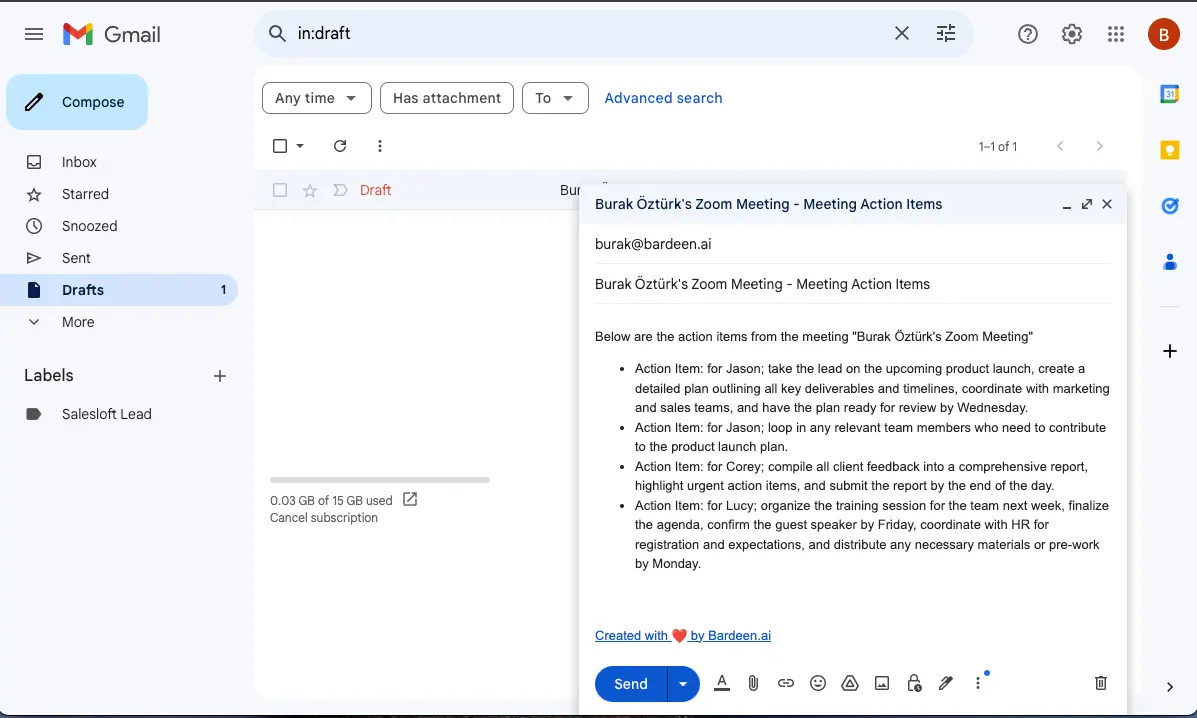
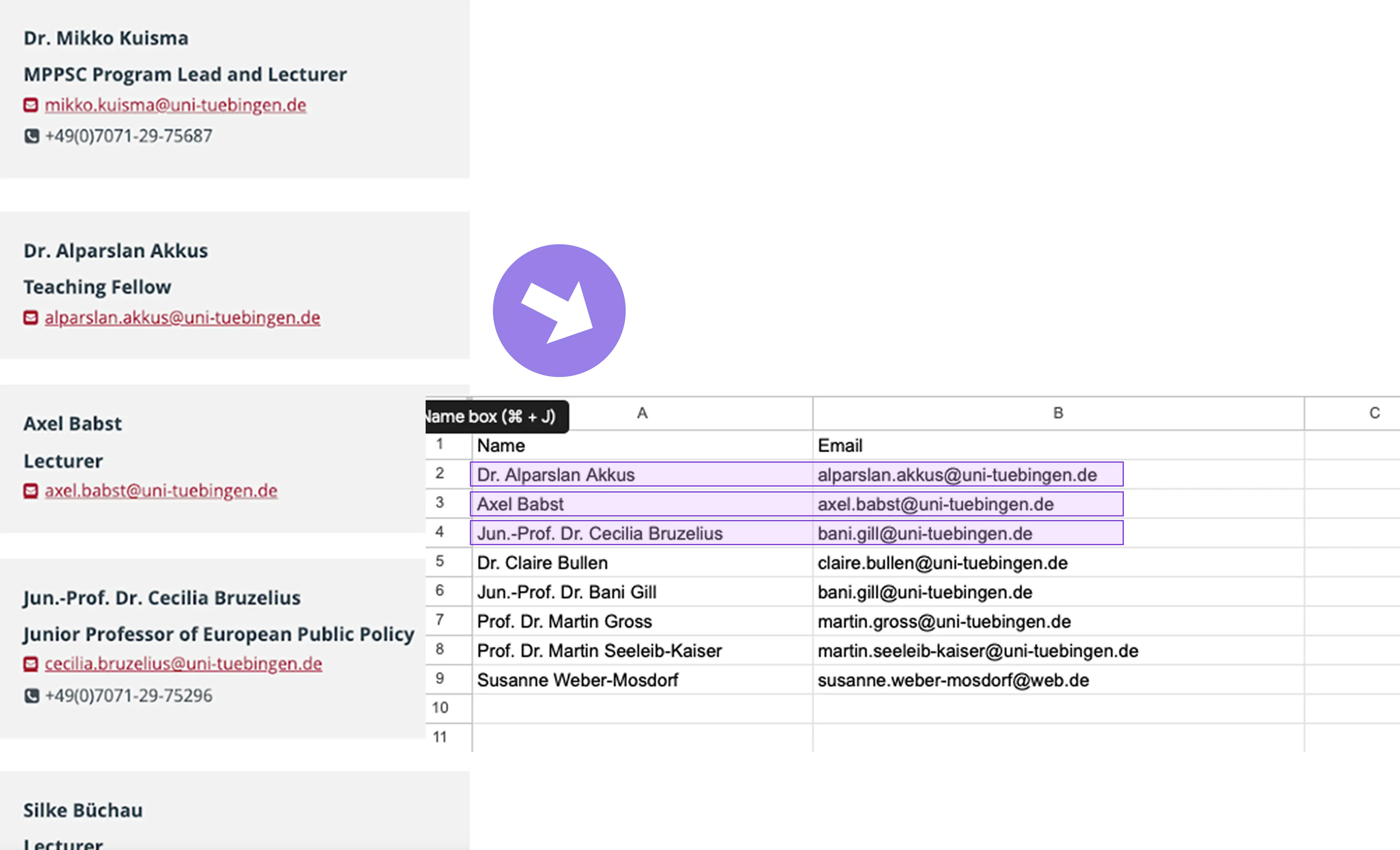
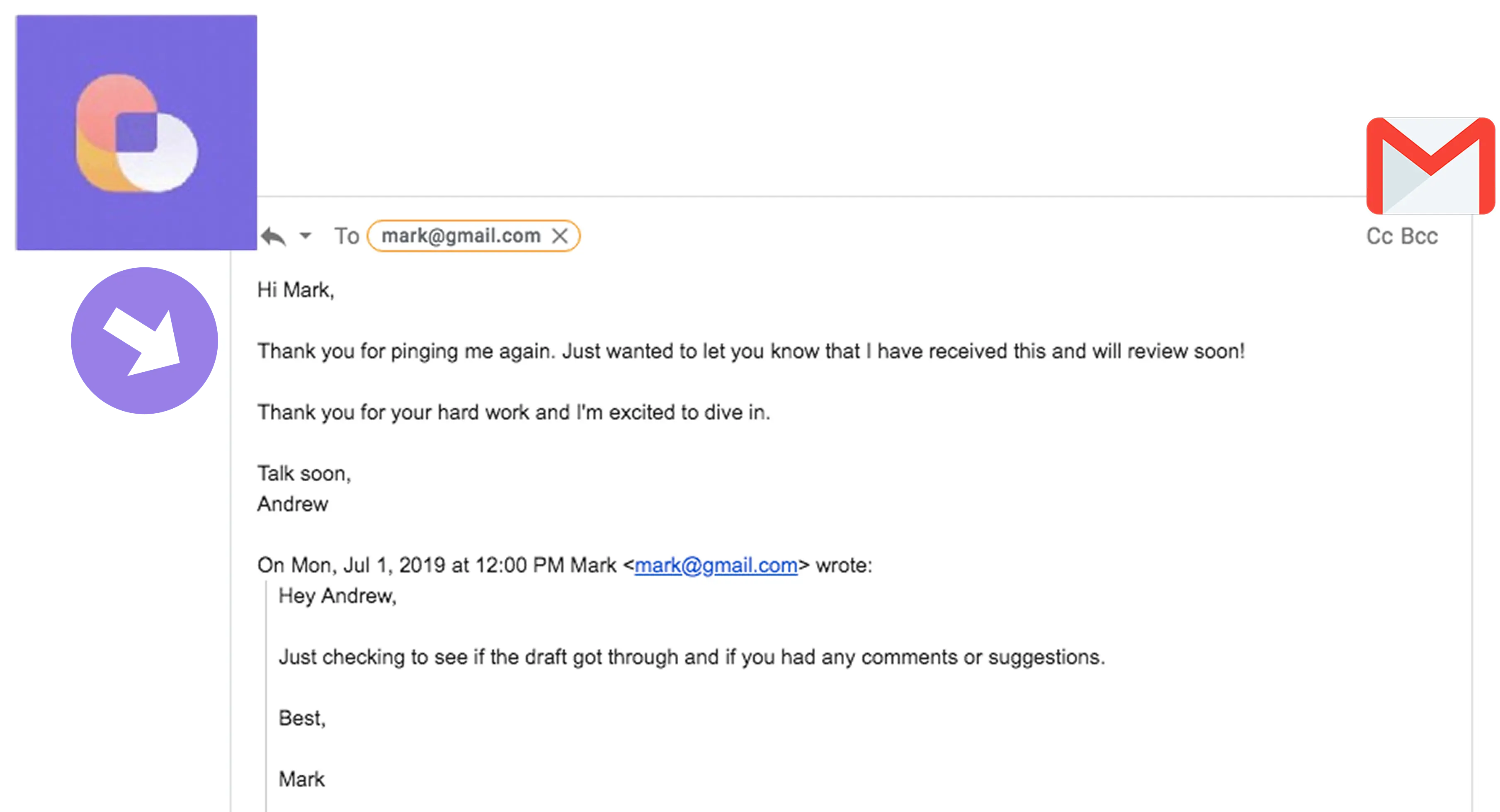

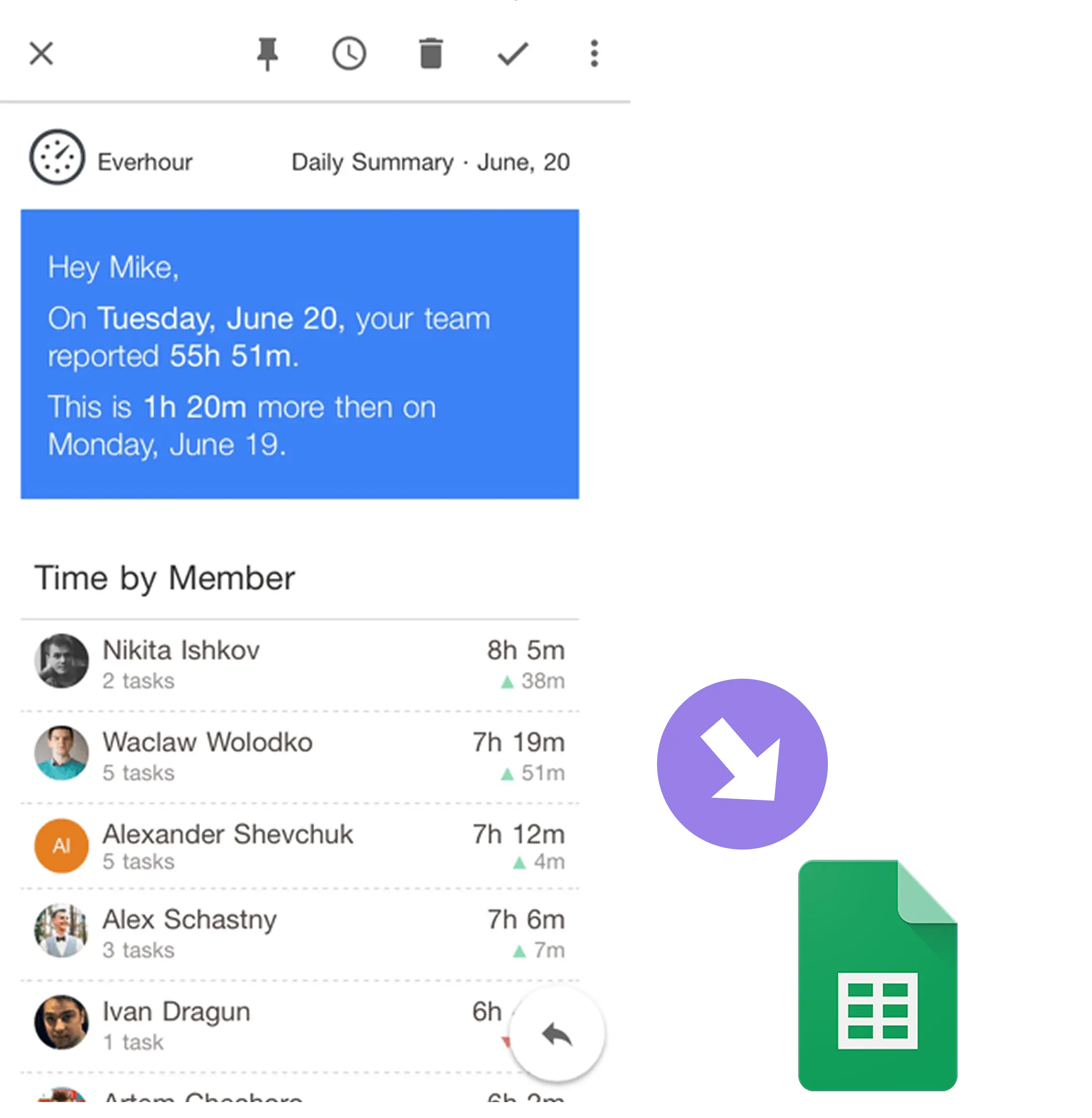







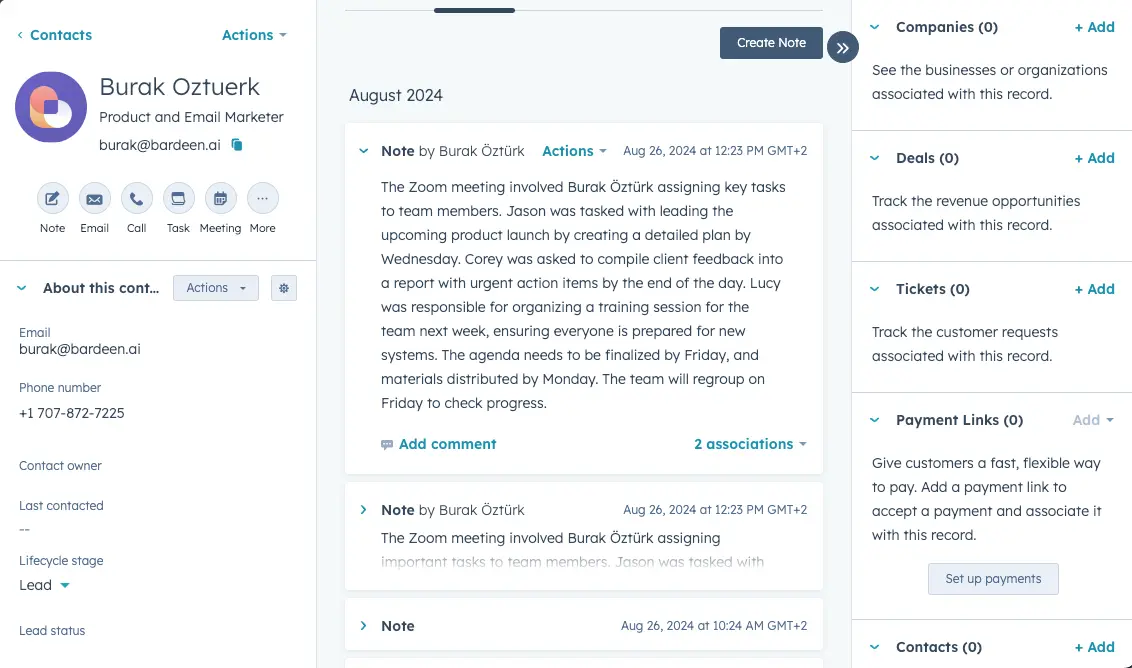



.svg)
.svg)
.svg)
